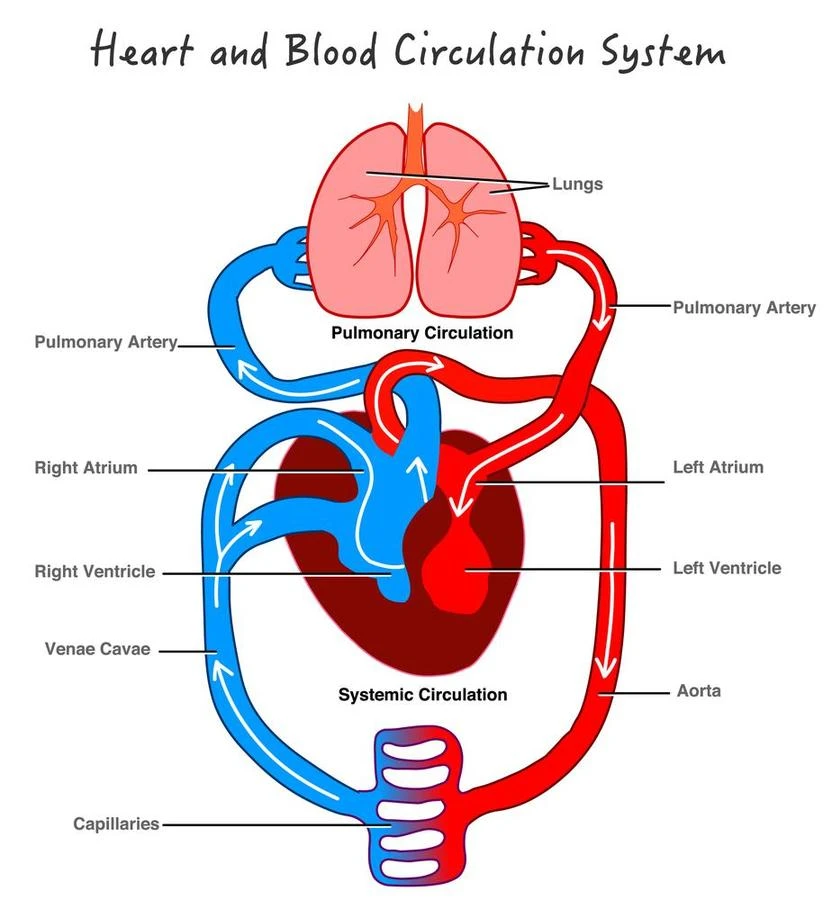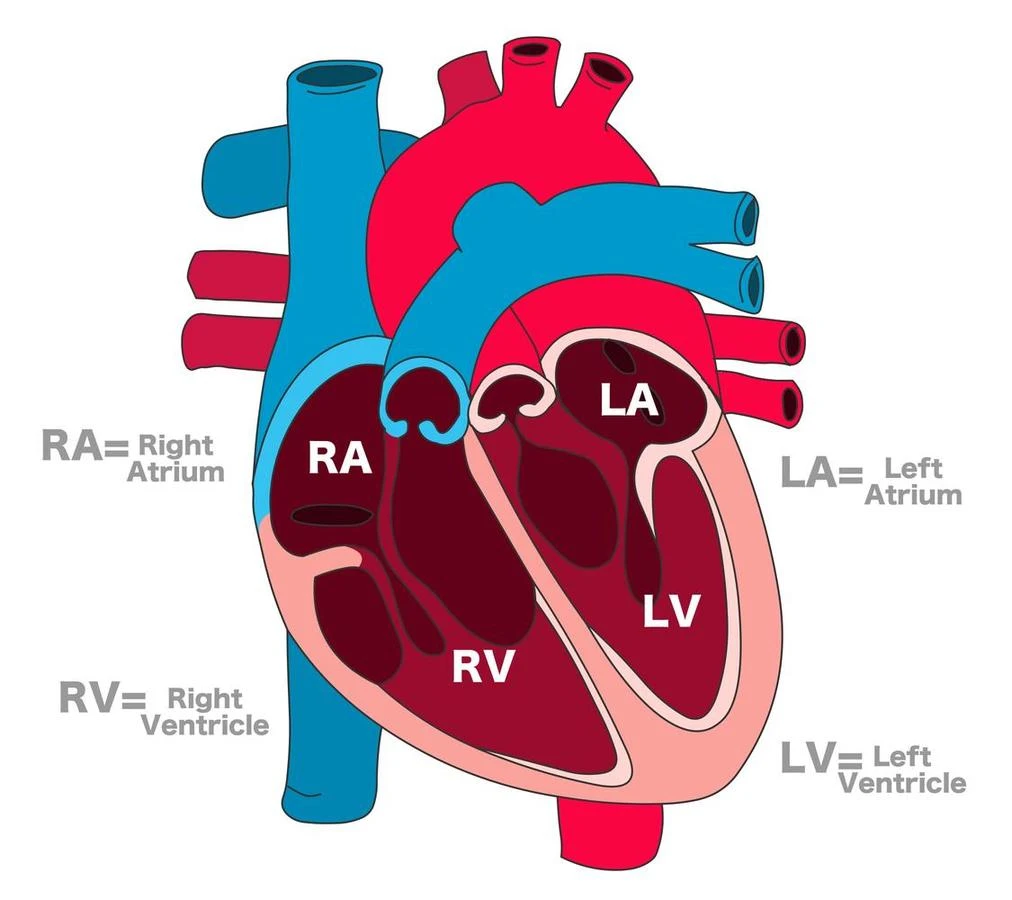Introduction
The human heart has four chambers that are crucial to the circulatory system and the left and right ventricles are two of them. The blood is pumped throughout the body and to the lungs, where it is oxygenated, by the left and right ventricles working in tandem. The two ventricles cooperate to effectively remove wastes like carbon dioxide from the body and to keep the body’s blood oxygen-rich at all times.
Circulatory system
The circulatory system’s main job is to deliver blood, oxygen, and nutrition to the body’s cells and remove waste materials. The circulatory system is in charge of keeping the body’s internal environment, or homeostasis, stable.
Here’s how the circulatory system accomplishes its main functions:
- Transporting oxygen: Blood pumped by the heart is rich in oxygen, which is essential for the cells of the body to function properly. The circulatory system carries oxygen to all parts of the body through the arteries and capillaries.
- Transporting nutrients: The blood also carries nutrients, such as glucose and amino acids, to the cells of the body to provide energy and support growth and repair.
- Removing waste products: The circulatory system removes waste products, including carbon dioxide and urea, from the body by transporting them to the kidneys, liver, and lungs for elimination.
- Regulating temperature: It helps to regulate body temperature by transporting heat from the skin, which is the body’s main source of heat loss.
- Supporting immune function: The circulatory system supports the immune system by transporting white blood cells to areas of the body where they are needed to fight infection.


Difference Between Left And Right Ventricle
Anatomy of the Left and Right Ventricle
The left ventricle is present at the lower left part of the heart and is the thickest chamber. It receives blood rich in oxygen from the left atrium and pumps it out by the aortic valve, transporting it to the rest of the body. The right ventricle is present in the lower right part of the heart and is thinner compared to the left ventricle. The oxygen-deficient blood enters from the right atrium and pumps it out by the pulmonary valve to the lungs to pick up oxygen.
The left ventricle have much thicker because it has to pump blood to the rest of the body, thus requires more force. The left ventricle circular shape, compared to right ventricle, which is crescent-shaped.
Function
The role of the left ventricle is pumping oxygen-rich blood to the rest of the body. This is done by contracting forcefully to create pressure that drives the blood out of the heart and into the aorta. The left ventricle also has a unique structure that allows it to maintain a high pressure for a longer period of time. This is because it has a thicker wall and a more efficient pumping mechanism than the right ventricle.
On the other hand, the right ventricle play a role in pumping oxygen-poor blood to the lungs. It does this by contracting and creating pressure that drives the blood out of the heart and into the pulmonary arteries, which carry the blood to the lungs. The right ventricle has a thinner wall than the left ventricle because it does not need to generate as much force to move blood to the lungs.
Conclusion
The circulatory system is made up of heart, arteries and blood. It delivers nutrients and oxygen to our body’s cells. Additionally, it eliminates waste materials like carbon dioxide. While the ventricle pumps blood out of the human heart, the auricles in mammals collect blood returning to the heart. Circulation is the continual flow of nutrients and waste materials through blood arteries. Maintaining heart health is crucial for our hearts to work properly.
Frequently Asked Questions
1. What is double circulation?
Double circulation is a term used to describe the circulatory system of the human heart, in which blood flows twice through the heart before being supplied to the body. It involves two separate circulations of blood: pulmonary circulation and systemic circulation. Double circulation ensures that the oxygen-rich blood from the lungs is efficiently supplied to the body, while at the same time, the deoxygenated blood from the body is quickly returned to the lungs to be re-oxygenated.
2. Do humans have an open or closed circulatory system?
The human have a closed circulatory system. In this, the blood is separated from the tissues and organs by the walls of the blood vessels.
3. What is a tricuspid valve?
Three unevenly shaped flaps make up the tricuspid valve. It is located between the right ventricle and right atrium, stops blood from flowing backward.